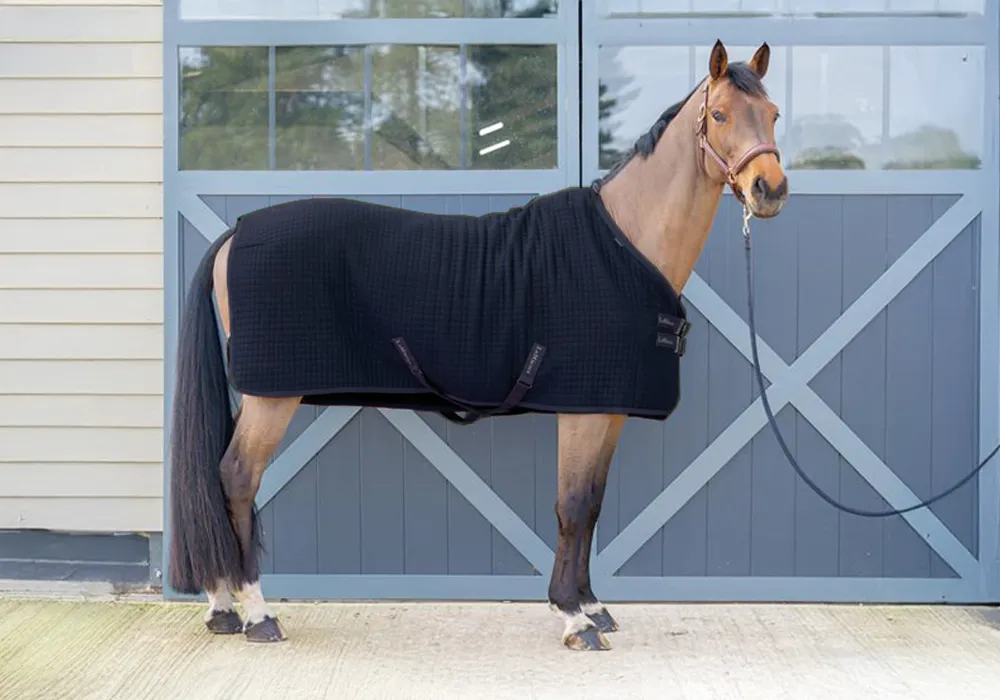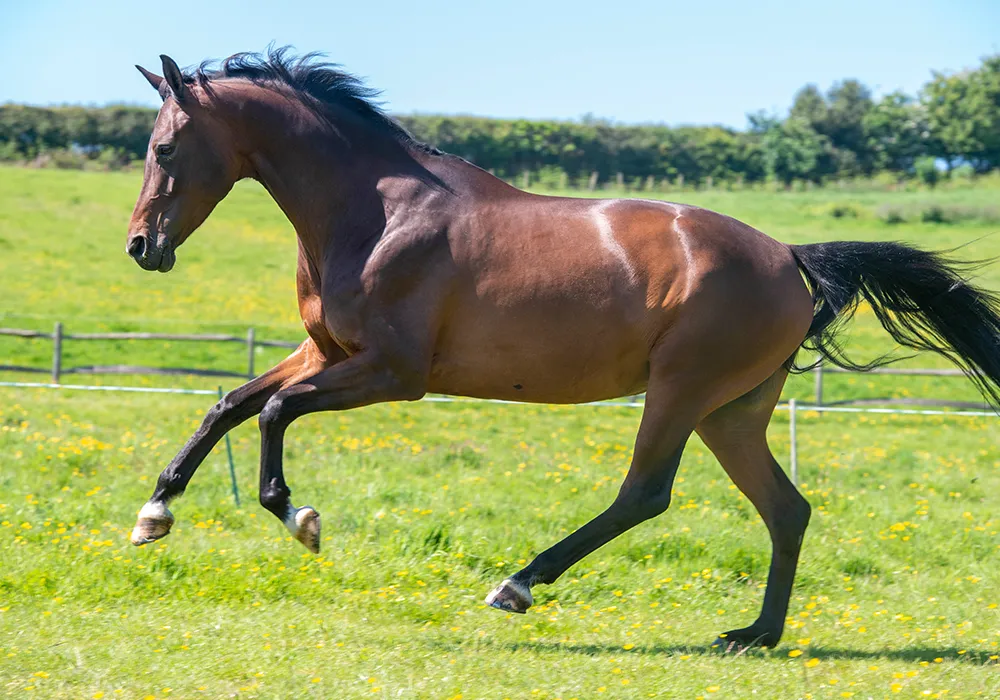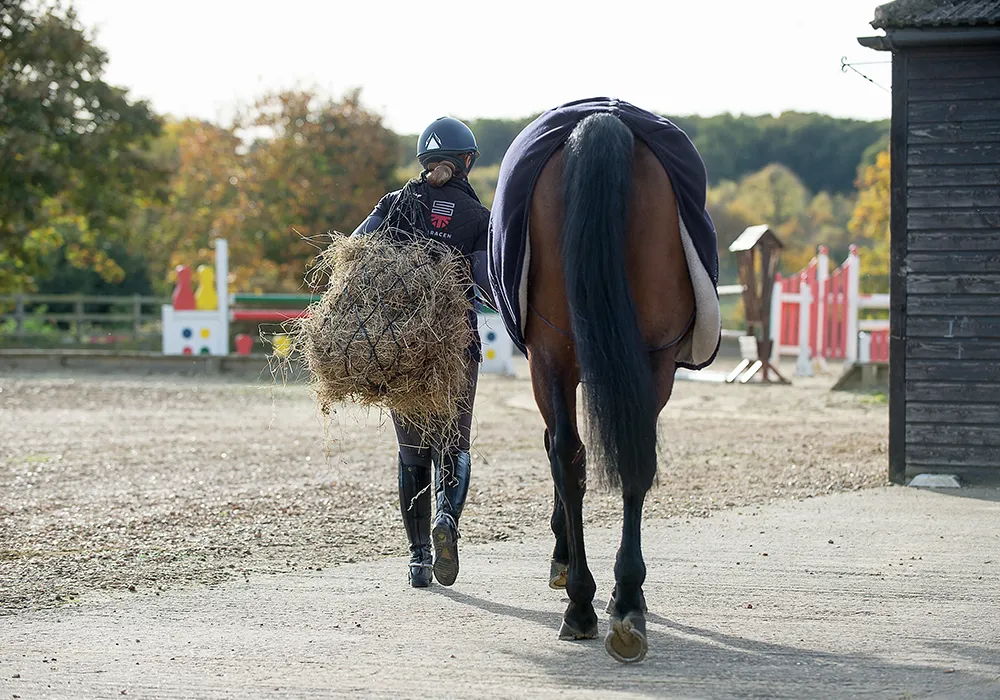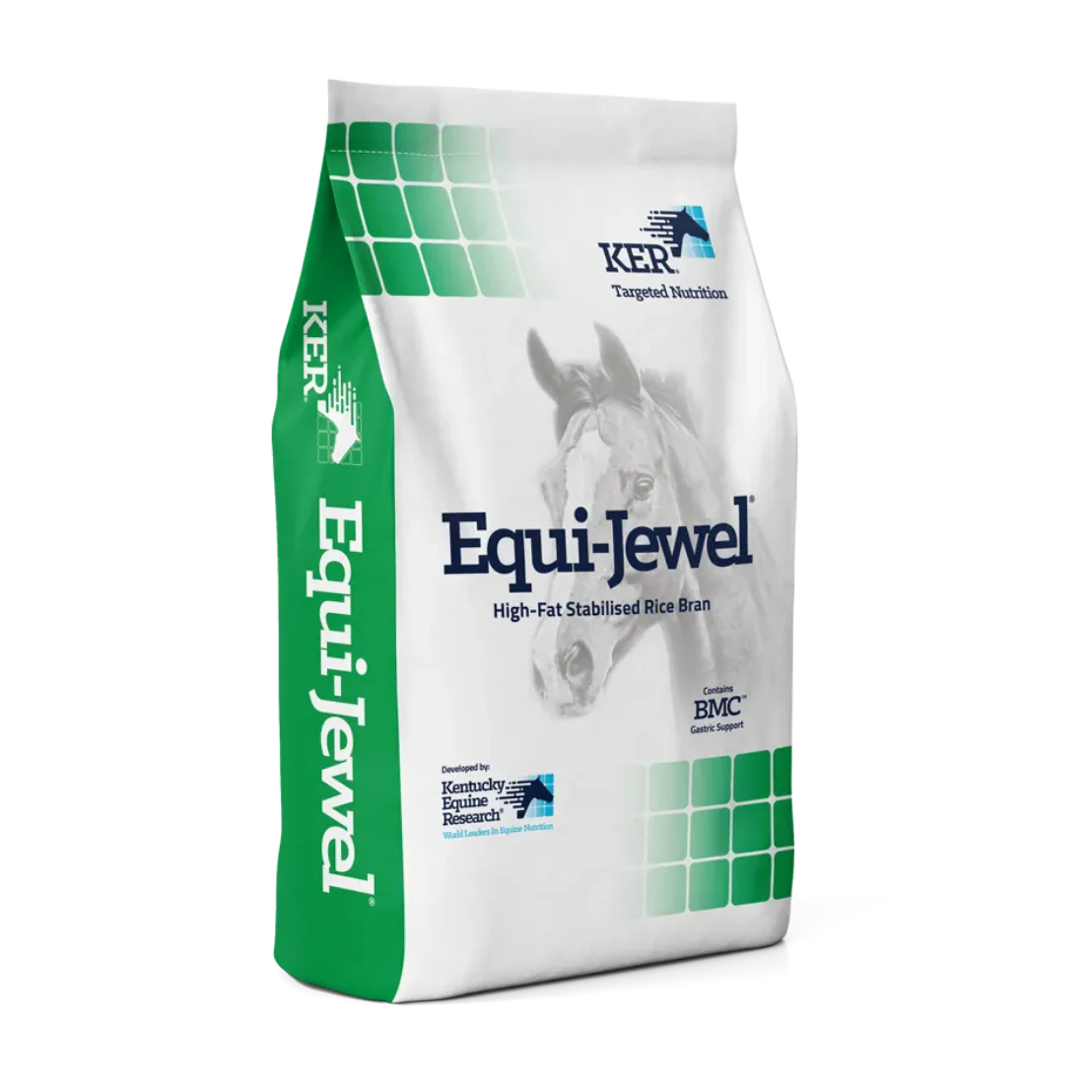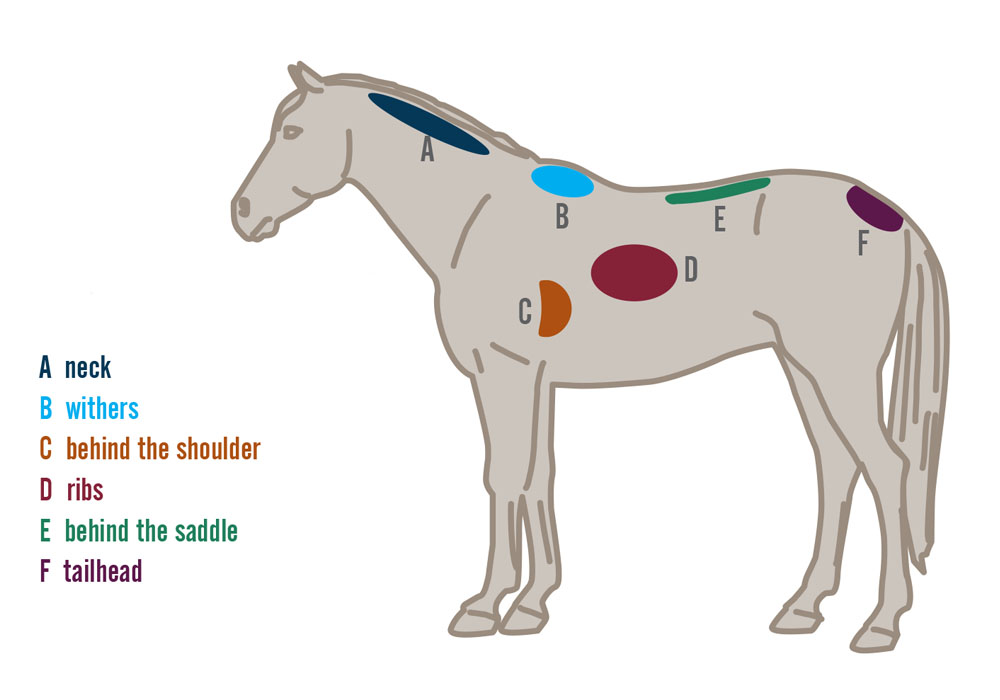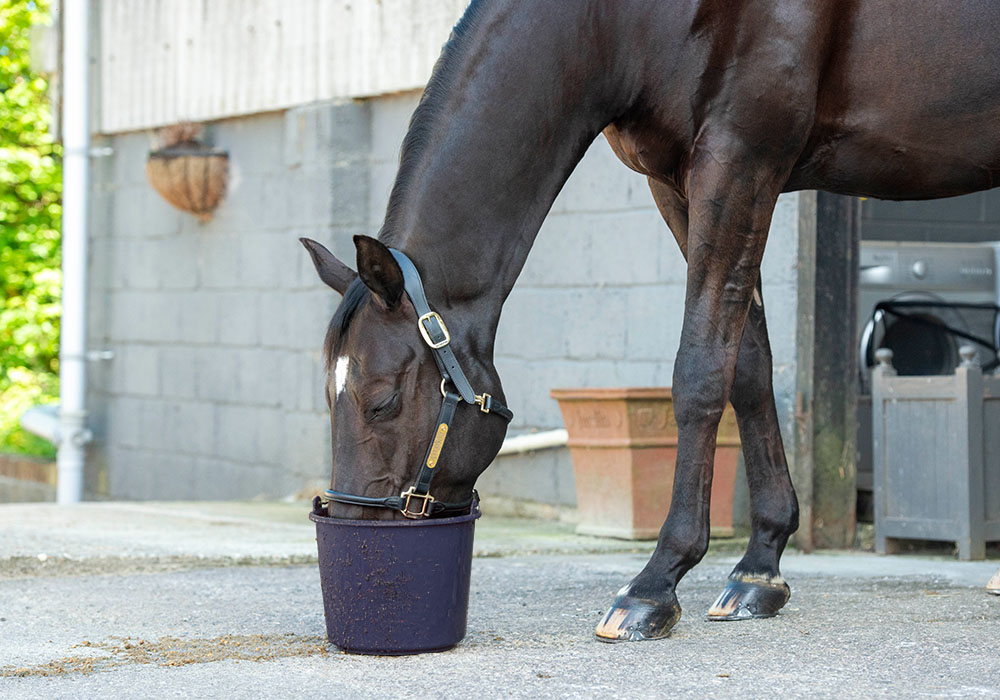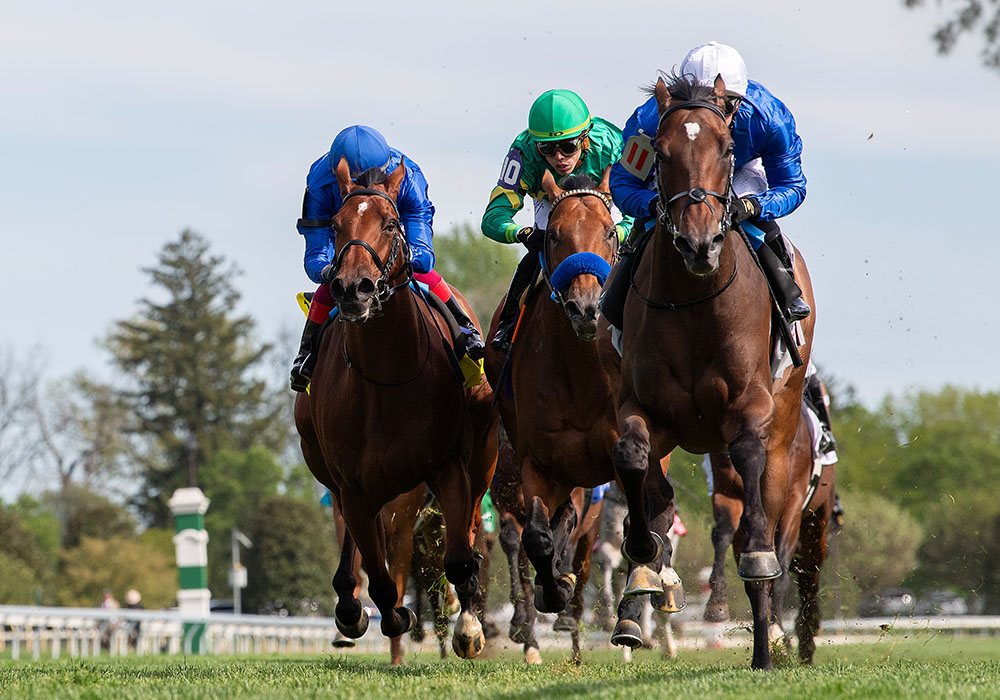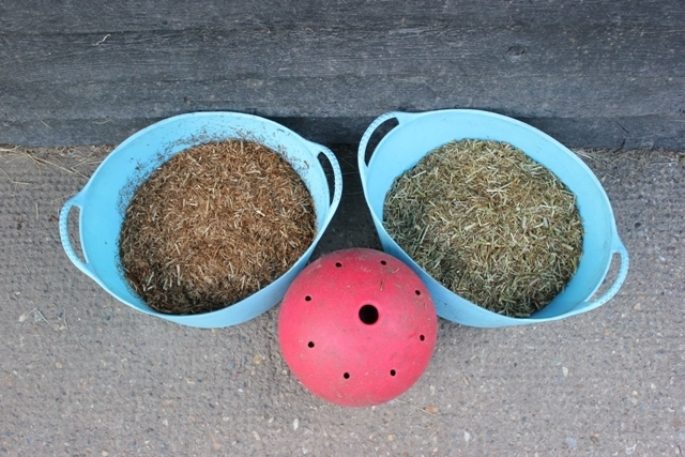Feeding the Ex-Racehorse: Improving Hoof Quality
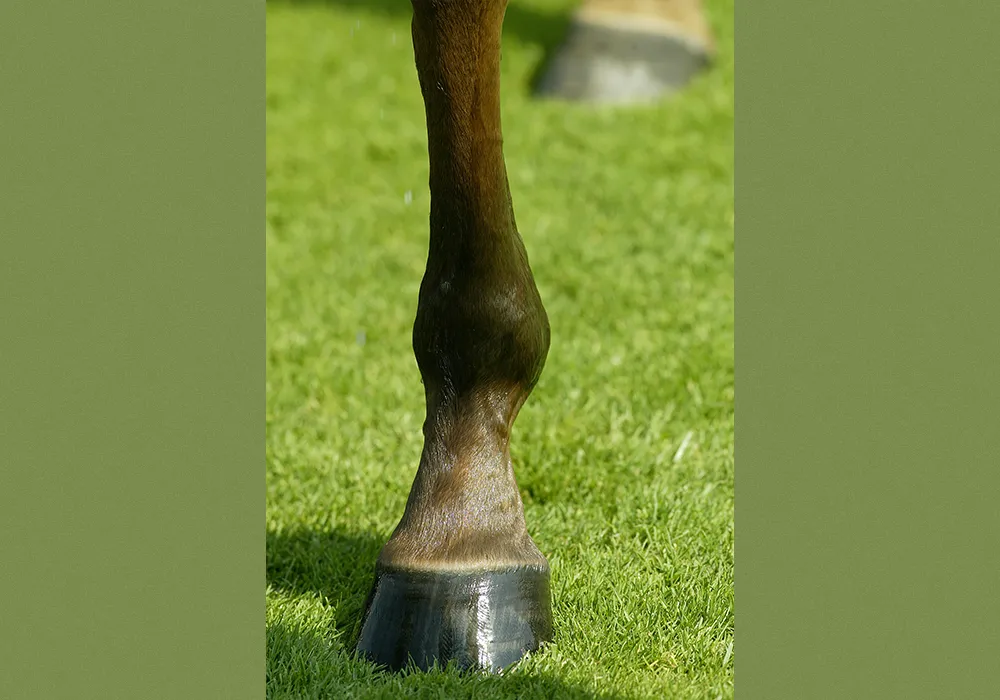
Commonly, we see Thoroughbreds with poor hoof quality and this is often down to a restriction in forage and or feed, meaning that they are at risk of missing out on some important vitamins and minerals in the diet.
Providing a balanced diet or feeding a balancer that contains a healthy hoof package will ensure that the hooves are provided with all the essential nutrients that they require to grow.
BIOTIN
Biotin is part of the B vitamin family, and is the most commonly fed supplement used to aid in hoof quality, but where does it come from? Forage is a great source of biotin however, horses synthesise B vitamins in the hindgut from forage digestion. Often horses that are on restricted forage rations or those that do not eat a lot of forage, have poor hoof quality.
Biotin (B6) is needed to convert methionine to cystine, which is a large component of keratin, a fibrous structural protein of hooves. Research suggests that a feeding rate of between 20-30mg of biotin per day should help to generate good hoof growth.
METHIONINE
Methionine is an essential amino acid (meaning the horse's body can't produce it on its own). There is researchto suggest that deficiencies of methionine in the diet may be a contributing factor to poor hoof quality. Manyhoof supplements will have methionine listed on the label, or possibly soya-bean meal which is a good sourceof methionine. This protein needs to be provided in the diet in the form that it is so that the horse can utiliseit.
CALCIUM
Calcium is found in the hoof wall, but in very small amounts (300-350 mg/kg). It is needed for the creation of sulphur cross-links between the hoof proteins, and the stronger these links are the stronger the hooves will be. Diets that are balanced are unlikely to be low in calcium when fed appropriately. The most common reason for poor calcium levels in the diet is when straight cereals are being fed which can upset the calcium-phosphorus ratio.
COPPER
Whilst copper has an important role to play in bone, cartilage tendon, and ligament formation, it is also an important part of hoof health. The growth mechanisms for hooves rely on copper to support the enzymes that form the strengthening cross-links between collagen and elastin molecules in connective tissue.
ZINC
Zinc is involved in the integrity of skin, hair, and hooves. This trace element is present in most horse feed ingredients, however, to ensure that adequate levels are met, additional supplementation is required. Most commercially available horse feeds are fully fortified, meaning that they contain a broad spectrum of vitamins and minerals, and will provide the recommended intake of zinc in the horse’s diet.
As with many vitamins and minerals, adding them to the diet can be hard due to absorbability and their function alongside other vitamins and minerals, e.g. zinc and copper – feeding too much of one will interfere with the absorbability of the other. Absorption of minerals can be improved by chelating them (binding them to a protein molecule) therefore looking out for ingredients such as zinc methionine, will indicate that the form of zinc used within the product is highly absorbable.
Whilst supplementing the diet with additional zinc carries low toxicity risks, it is better to ensure that your horse is receiving a balanced diet to avoid issues with copper absorption. Zinc is also required for the correct formation of the equine epidermis and is an essential co-factor in over 200 enzyme systems.
Need Guidance?
If you would like any further information on feeding your horse or pony please feel free to contact our nutritional team on +44 (0)1622 718 487, email info@saracenhorsefeeds.co.uk or fill out our Feed Advice Form.
